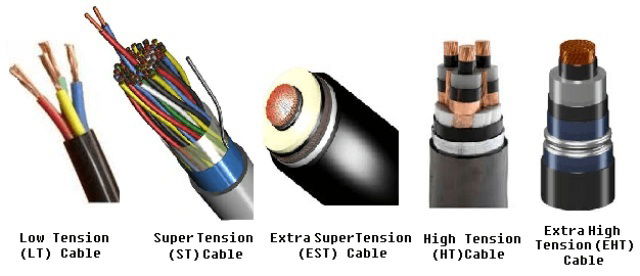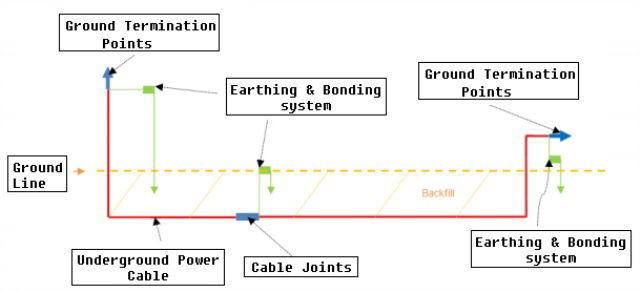Underground Power Cables – Architecture, Applications and Advantages
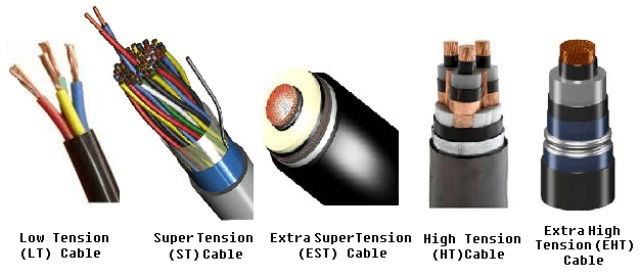
Odo S
The electrical power transmission is carried out through two main approaches i.e. by use of Underground Power Cables or overhead electrical cables. This post gives a detailed description of what are Underground Power Cables, its architecture, types, various applications, advantages and disadvantages.
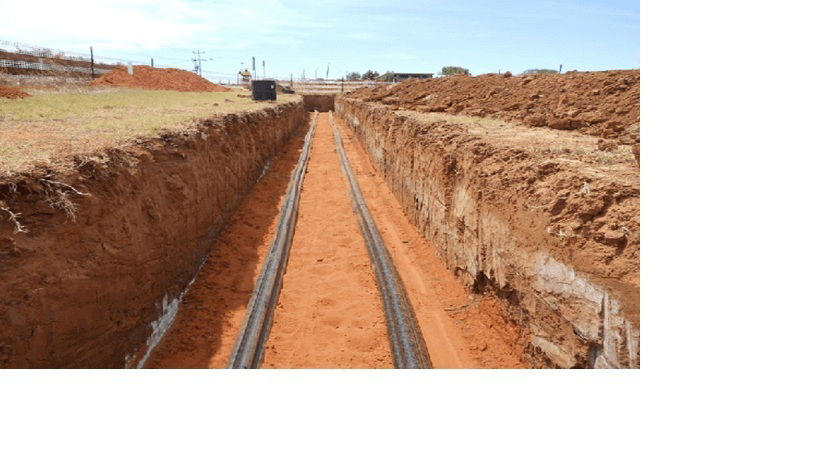
Fig. 1 – Underground Power Cables
Table of Contents
1 What are Underground Power Cables
2 Architecture of Underground Cabling System
2.3 Earthing and Bonding Systems
3 Structural Components of Underground Power Cables
4 Types of Underground Power Cables
5 Applications of Underground Power Cables
6 Advantages of Underground Power Cables
7 Disadvantages of Underground Power Cables
What are Underground Power Cables
The power transmission achieved through cables that are laid underground are called Underground Power Cables. Though the installation cost of these cables is high, it is considered reliable. The primary function of an Underground Power Cable is to transfer power between locations including generation sources, substations, load centers etc. Figure 2 shows different types of Underground Cables.
Fig. 2 – Underground Power Cables Available in Market
Architecture of Underground Cabling System
Underground Cabling System consists of various components like temperature & condition monitoring systems, Earthing and Bonding systems, Cable Joints, Junction boxes, above the Ground Termination Points etc. Figure 3 below shows a typical Underground Power Cabling system.
Fig. 3 – Underground Power Cable System
It involves the installation of terminator device from one end of the transmission line to the other end to prevent the signals from reflecting which causes power loss.
Cable Joints
Low, medium or high voltage cables are connected using Cable Joints.
Earthing and Bonding Systems
Earthing or grounding is done to limit and stabilize the voltage to earth. Bonding system provides electrical continuity and conductivity.
Junction Boxes
It acts as an enclosure for numerous wires that connects to a common point or junction.
Structural Components of Underground Power Cables
Underground Cables consists of the following components:
Conductor
Insulation
Bedding
Armouring
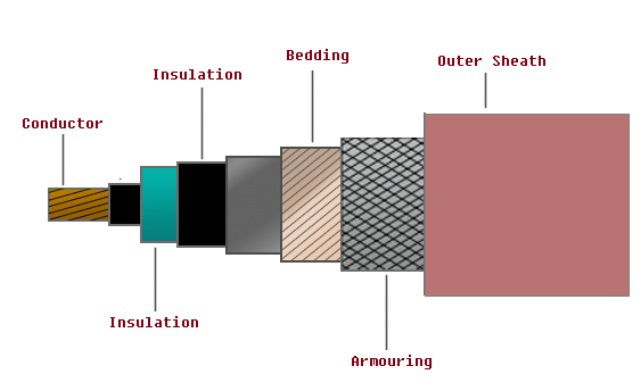
Fig. 4 – Structural Components of Underground Power Cables
1. Conductor: It assists in transporting electric current.
2. Insulation: A layer of separation between the cable conductor at high voltage and bedding at ground potential.
3. Bedding: It acts as a protective barrier between inner and outer layers of the power cable.
4. Armouring: It provides mechanical resistance and protection of the cable-core. It can withstand higher stresses. The armouring is generally used as “earth wire” for the equipment supplied through cable.
5. Outer Sheath: This layer protects the inner metallic sheath and acts as insulator to withstand induced and transient voltages.
Types of Underground Power Cables
Based on its voltage handling capacity, insulation material and core diameter, these cables are classified into five different types. They are:
Low Tension (LT) Cables
High Tension (HT) Cables
Super Tension (ST) Cables
Extra High Tension (EHT) Cables
Extra Super Voltage (EST) Cables
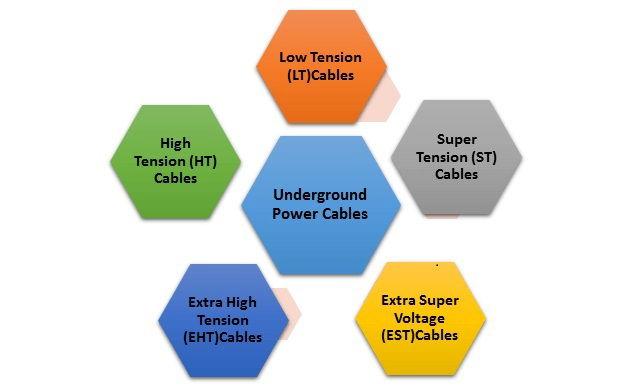
Fig. 5 – Types of Underground Power Cables
Applications of Underground Power Cables
The applications of Underground Cables include:
Electrical power is transmitted and distributed through these cables.
They are used in places where laying overhead cables becomes impossible.
Advantages of Underground Power Cables
The advantages of Underground Cables are:
Transmission loss is negligible. One may ask how it’s possible even when heat dissipation is less effective in underground cables. Heat loss is apparently a power loss only as with increase in temperature, wire resistance will also increase. But we also have to consider the fact that underground cable, in general, are thicker than overhead cables. The thicker a cable will be, the less will be voltage drop. According, if we do not consider the cost and thickness difference, it may be stated that Underground cables provide low transmission loss.
More secured compared to overhead cables.
Completely eliminates electrical and magnetic fields above the ground level which otherwise would pose a threat to health concerns.
Less susceptible to damage caused by heavy rain, wind and thunderstorms.
Disadvantages of Underground Power Cables
The disadvantages of Underground Cables include:
Laying of cables requires excavation which might be difficult in congested areas.
Cost of maintenance is high.
Modifications to existing cable network is laborious as it requires completely new excavation.
Susceptible to damage due to underground water and moisture in the soil.
Heat dissipation is less effective.
As underground cables are more thicker than overhead cables, the cost involved is high.
